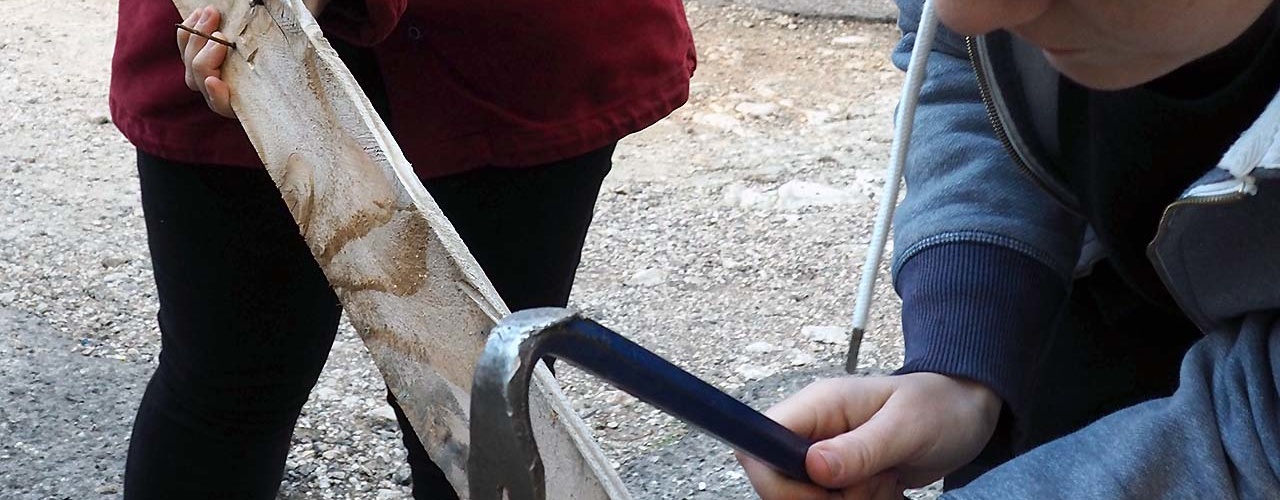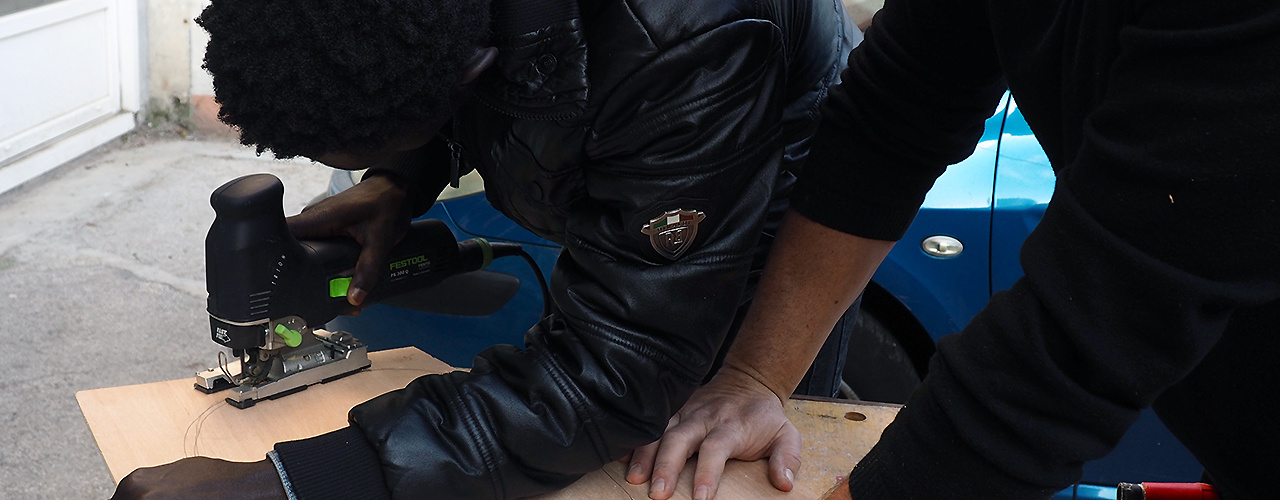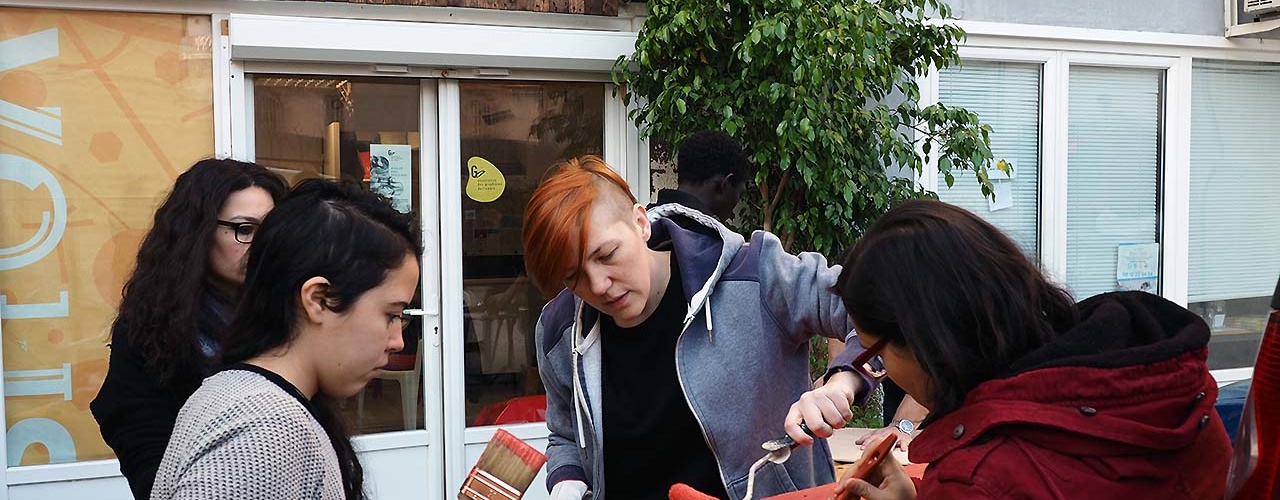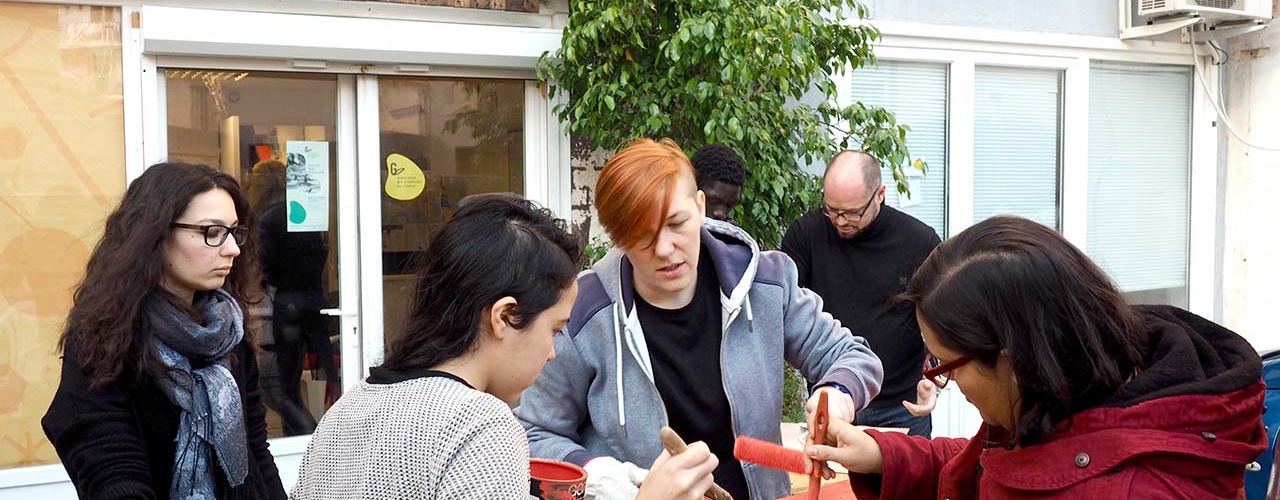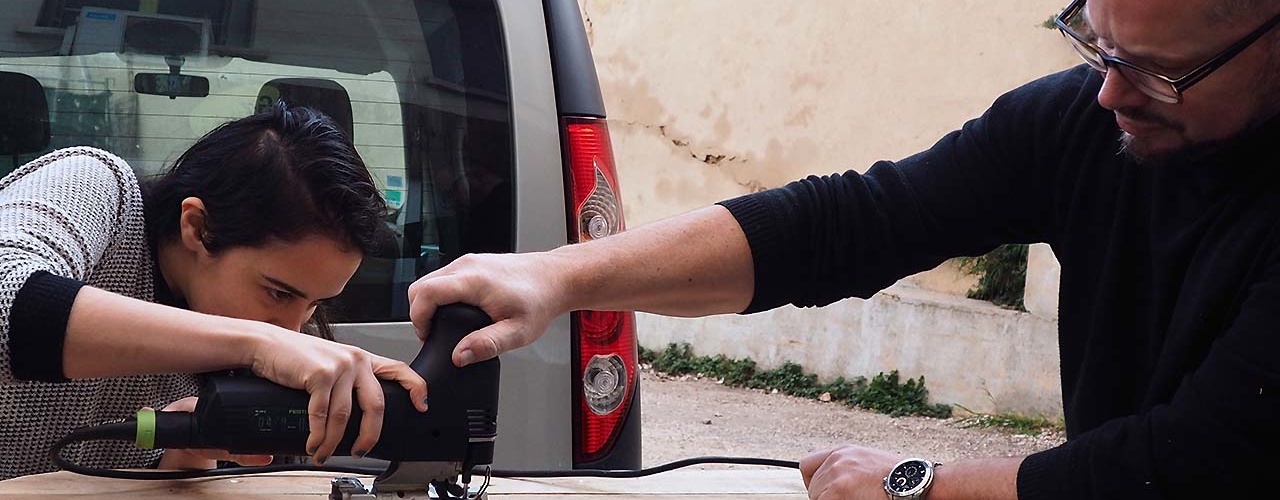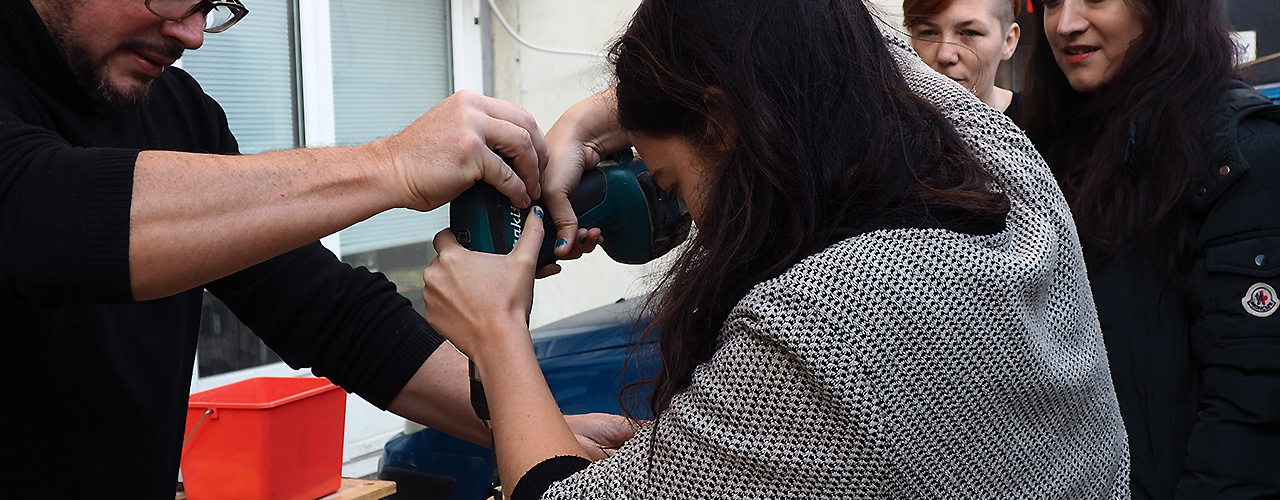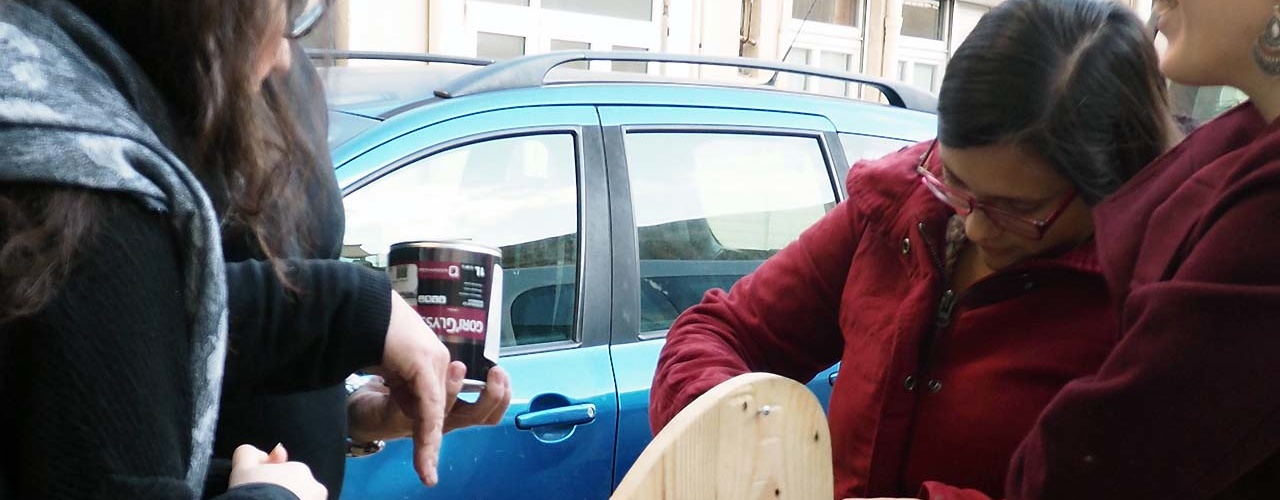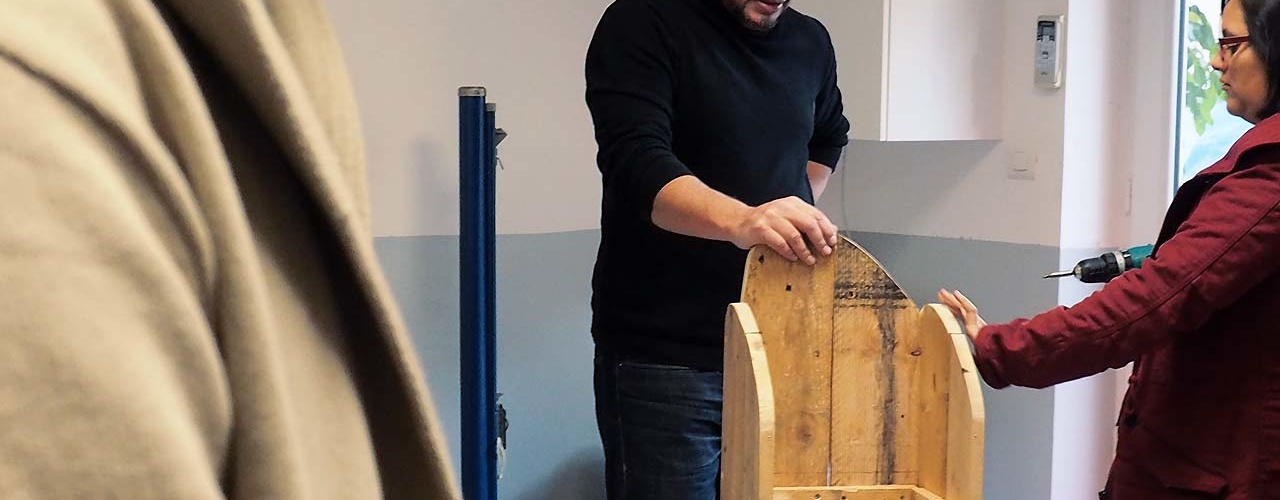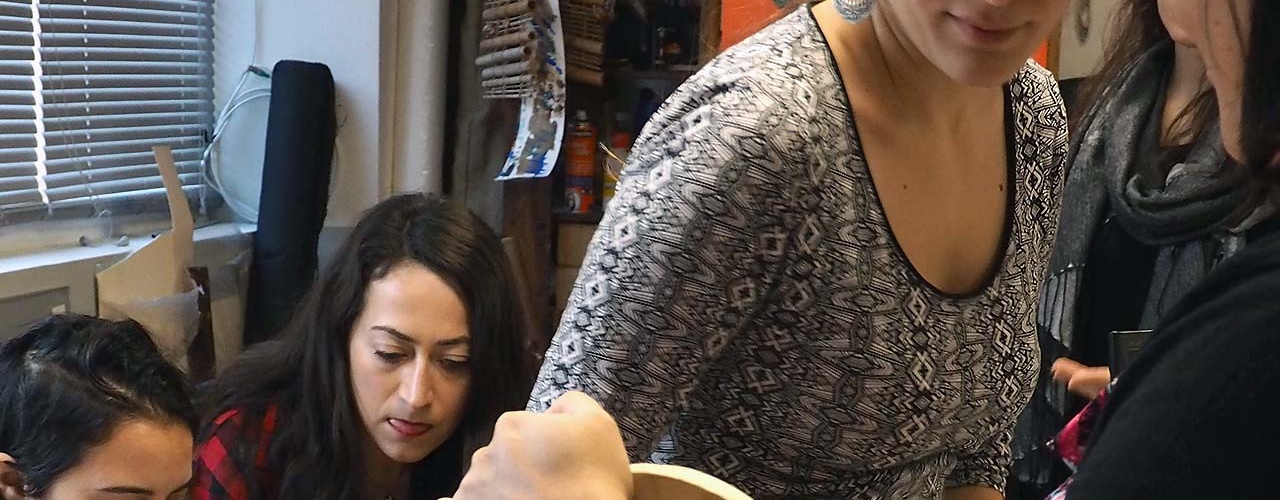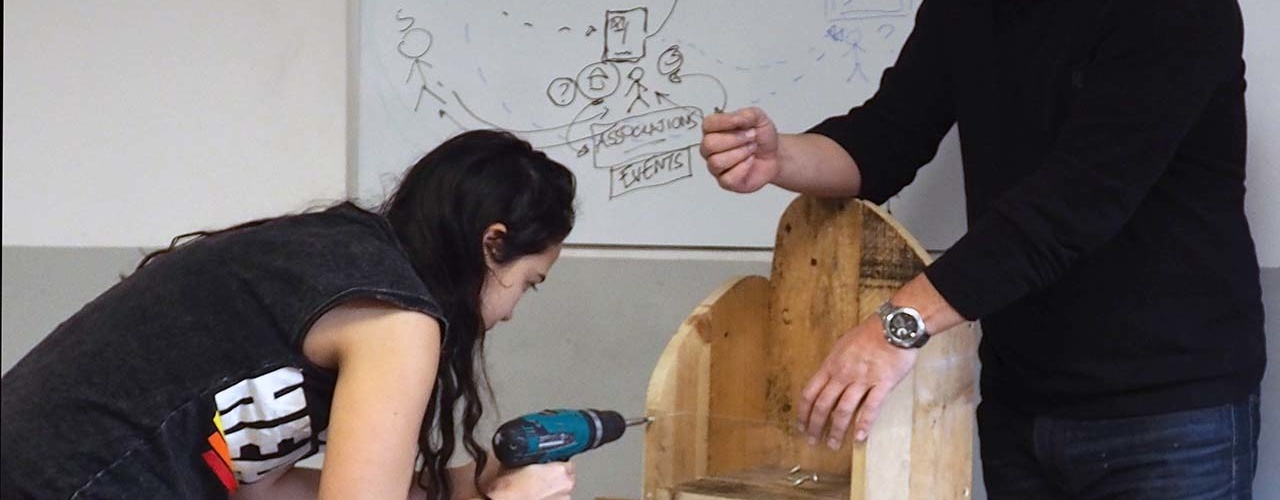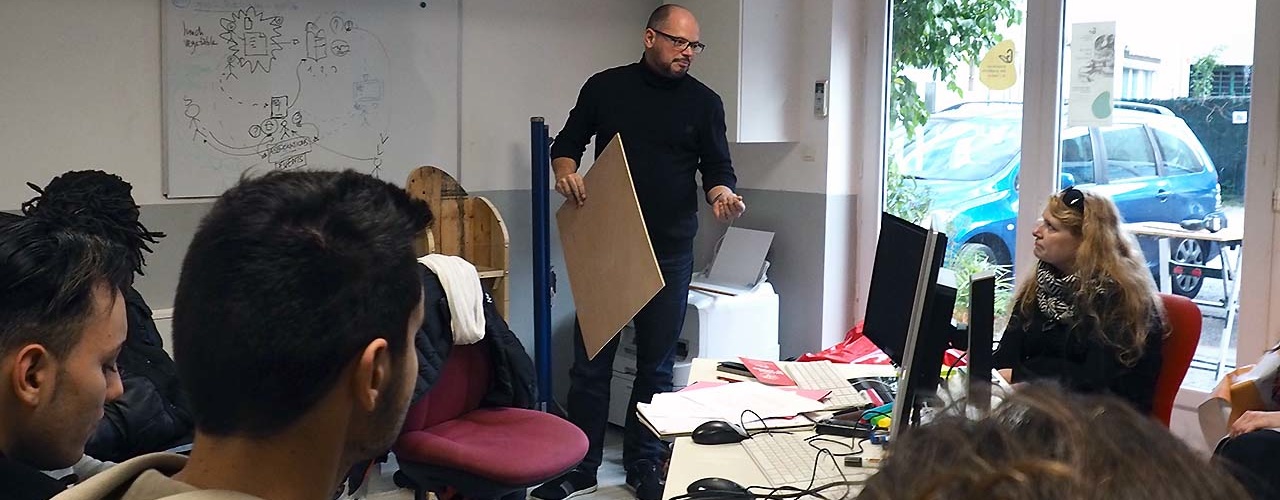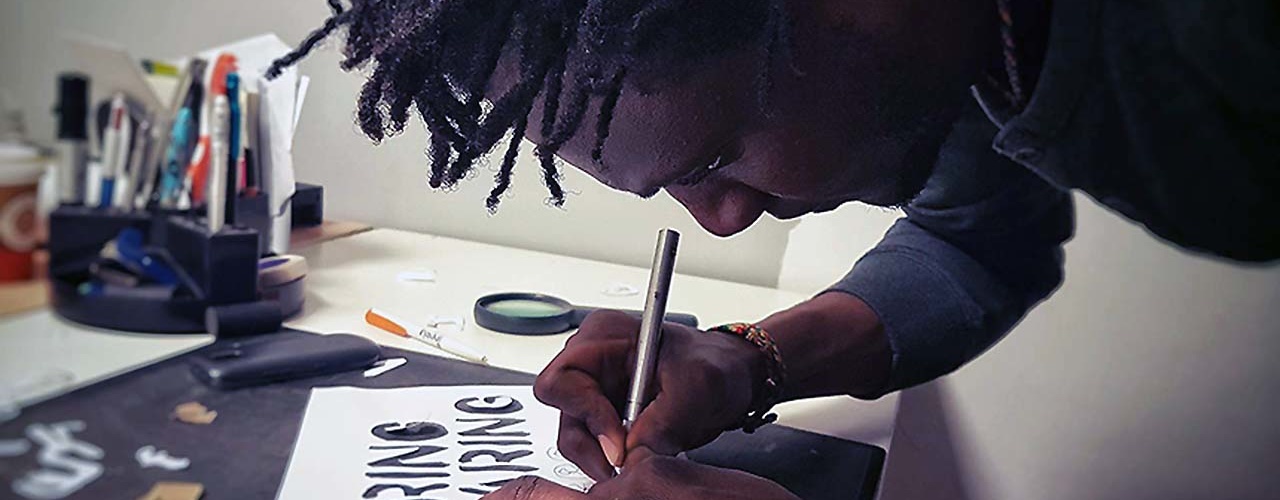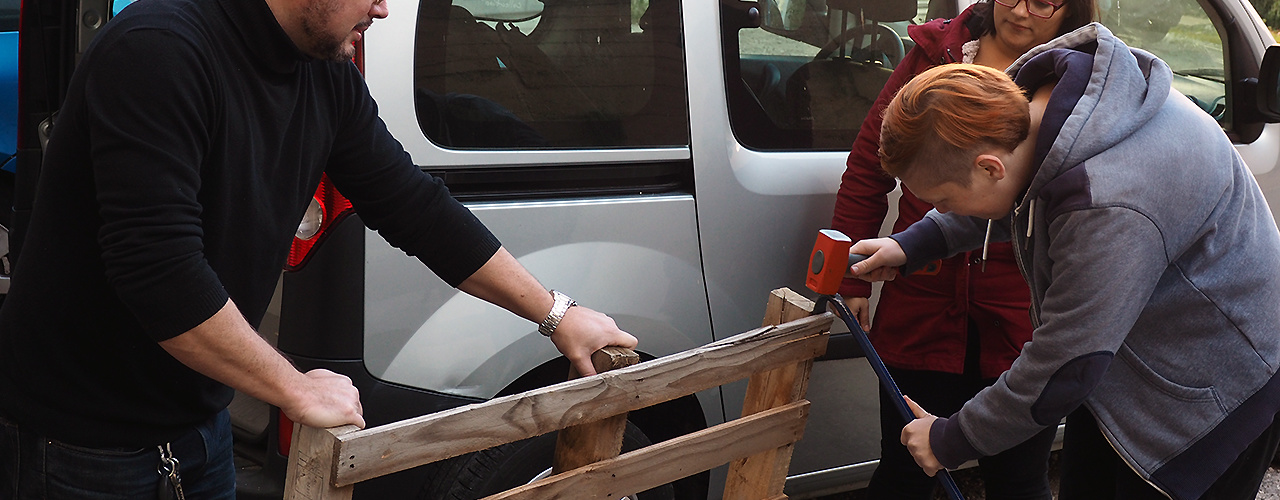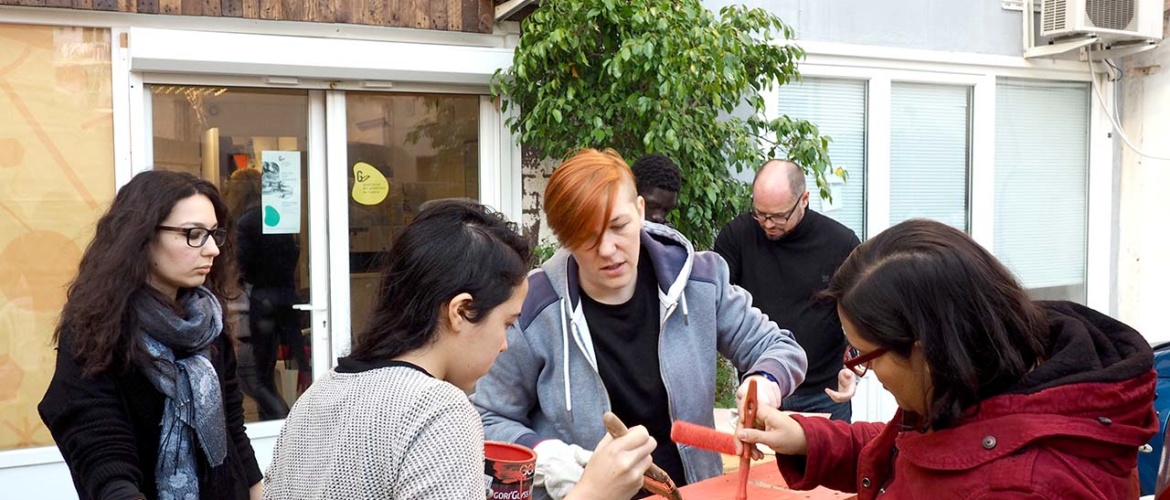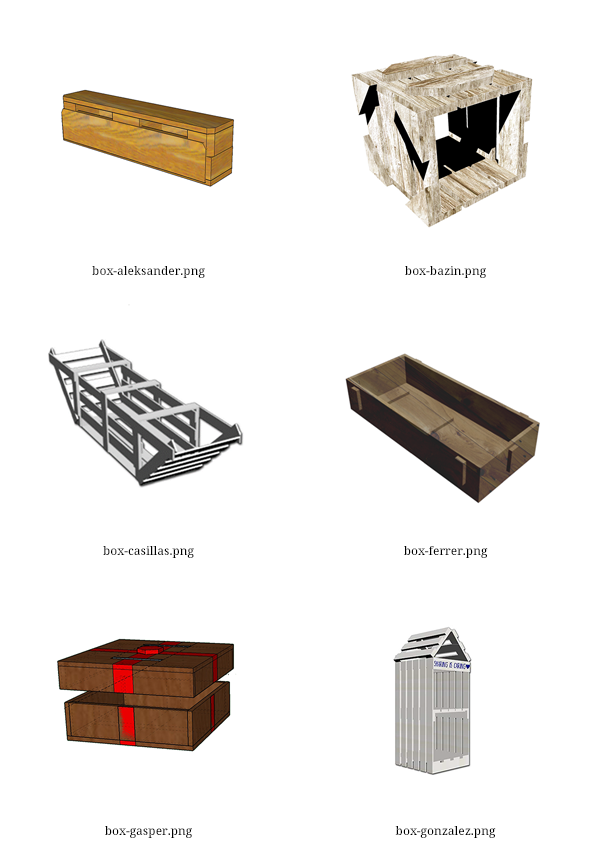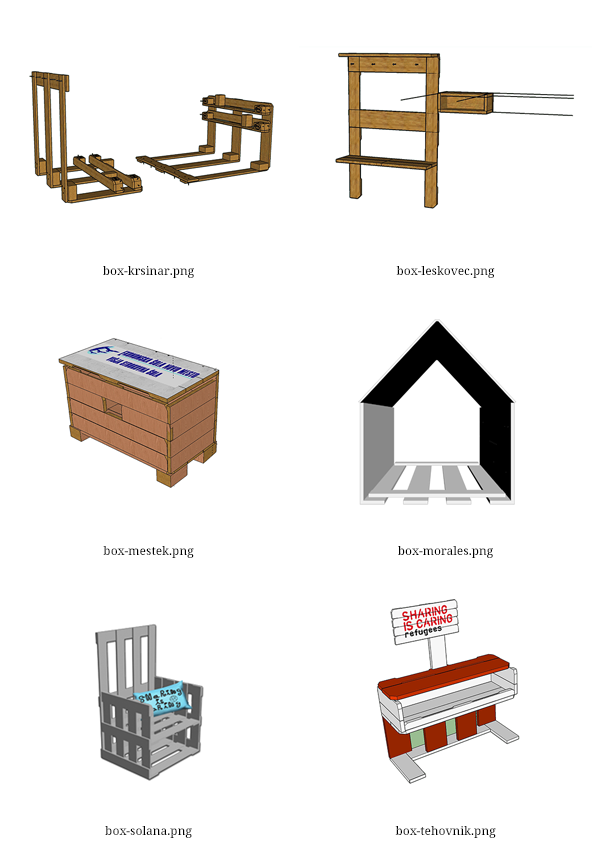(compiling of Intellectual Outputs 2 and 3 – provisory document)
- VOCABULARY 3
- SPECIFICATIONS OF SIC INFORMATIONAL BOXES x
2.1 Needs identified after first meeting “Who are refugees ?” x
2.2 Focus upon Local Exchange Systems x
2.3 Specification of SIC Givebox schools contest x
- FEEDBACK OF FIRST WORKSHOP TESTING THE CONCEPTION AND BUILDING OF A SIC BOX x
- FEEDBACK OF SIC CONTEST x
- FEEDBACK OF SECOND WORKSHOP BUILDING TWO LAUREATES SIC BOX x
- LAST IMPROVEMENT : THIRD MODEL OF SIC MINI BOX x
- EXEMPLE OF NOTICE FOR BUILDING BOXES (FRENCH LAUREATE) x
-
VOCABULARY
Definitions important to know about design and Local Exchange Systems.
Design (to) – Decide upon the look and functioning of (a building, garment, or other object), by making a detailed drawing of it. (Oxford dictionary)
European palette – Storage and loading tray for the automatic handling of goods using trolleys and elevators. The market for the wooden pallet boomed between 1965 and 1974 due to the palletization of large and medium-sized enterprises (M. Duprez, La Palette en bois R. Forest, fr., 1976, no. 1, p.66). deliveries of food products and, more generally, of consumer goods are increasingly being made on pallets (consigned or lost) (WellhoffComm.1977). (based upon CNRTL)
The pallets are designed to be reused, making it a material of choice for furniture, planters, a terrace, a composter or garden furniture.
There are about 300 million wooden pallets in circulation in France, almost 5 per inhabitant. 70 million are manufactured in the country. The species used are poplar, spruce, Douglas fir, sylvestre or maritime pine – these last 3 species are naturally rot-proof (class 3).
There are two types of pallets:
- Unmarked pallets. They are intended for the transport of goods within the territory. They are available in various sizes: 80 x 120 cm, 100 x 120 cm, 60 x 80 cm … Available for light, heavy or heavy loads, they are either « lost » (used only once) or » multi-rotations « . They are not processed.
The most solid are « cement » pallets, intended for the transport of cinder blocks, bricks, bags of cement, lime or sand. They are made of fir, spruce or Douglas fir. According to the manufacturing standards, these pallets must be made of wood free of defects and have a moisture content of less than 25%.
Where to find them? For sellers of materials, in do-it-yourself signs, on construction sites or renovation projects. - Pallets marked EUR EPAL, intended for the transport of goods abroad (import and export). The latter, the most numerous, measure 80 x 120 cm and are designed to withstand 1,500 kg. They are made mainly of maritime pine or poplar. They must be treated to avoid the spread of problematic insects or fungi (ISPM 15 standard).
The only treatment currently authorized in the European Union is heat treatment (HT: Heat Treatment): the pallets are placed in large ovens, the wood is heated to 56 ° C (core) for at least 30 minutes. The pallets are then dried (for 1 to 2 days) to reach 22% maximum humidity. This process removes up to 8 liters of water per pallet. This phytosanitary treatment is very healthy, non-polluting, it strengthens the wood.
How to recognize this heat treatment for sure? Read the cartridge between the EUR and EPAL logos and look for the HT symbol (Heat Treatment).
It should be noted that fumigation treatment with methyl bromide (MB), toxic, is totally prohibited since March 18, 2010, the date of termination of waivers. This is a decision of the European Union which applies to all types of pallets and packaging. Most manufacturers have anticipated this ban, so it is now very rare to be confronted with these pallets. Nevertheless, in order to recognize a EUR EPAL pallet treated with methyl bromide, the symbol MB (methyl bromide) must be found on the cartridge.
The life of a pallet is of the order of 4 to 5 years and 8 to 10 years when it is part of the pool of a renter.We distinguish the main renters of pallets by colors:
-
- red pallets: LPR pool,
- blue pallets: CHEP pool,
- brown palettes: IPP pool.
(based upon Esprit Cabane, The magazine of creative and ecological ideas)
Life Cycle Assesment – A systematic set of procedures for compiling and examining the inputs and outputs of materials and energy and the associated environmental impacts directly attributable to the functioning of a product or service system throughout its life cycle.
It is a technique for assessing the potential environmental aspects and potential aspects associated with a product (or service), by :
- compiling an inventory of relevant inputs and outputs,
- evaluating the potential environmental impacts associated with those inputs and outputs,
- interpreting the results of the inventory and impact phases in relation to the objectives of the study.
(ISO 14040.2 Draft: Life Cycle Assessment – Principles and Guidelines)
Local Exchange System – A local exchange trading system (also local employment and trading system or local energy transfer system; abbreviated LETS) is a locally initiated, democratically organised, not-for-profit community enterprise that provides a community information service and records transactions of members exchanging goods and services by using locally created currency. LETS allow people to negotiate the value of their own hours or services. (Wikipedia)
Reuse – Reuse refers to systems or channels in the field of waste management that make it possible to reuse an object (for the purpose for which it was initially intended or for another use).
Self-build – Generally speaking, self-build refers to the fact that an individual build any construction (eg his own house, a sailboat, a wind turbine, a solar water heater, an agricultural machine, etc.) without professionals.
Self-construction of houses is common in developing countries, sometimes organized into neighborhoods, even in small towns, the shantytown being one of the forms. It can also rely on the restoration of an ancient heritage (abandoned village, urban or industrial wasteland for building lofts, etc.). Self-construction of houses also exists in some industrialized countries, particularly in certain communities in America (Mormons, hippie or ecological movements, etc.) or in the Netherlands and more or less severely regulated in rich countries. In France, the “Beaver” Co-operative Movement was at its peak after the Second World War, during the reconstruction, and it is framing more individualistic initiatives today.
The self-construction of other objects is sometimes accompanied by editions of manuals, organization of exchanges of practices and training. For example, it is the case of the self-construction of agricultural machinery for organic market gardening.
(based upon french wikipedia)
Sketchup – SketchUp, formerly Google Sketchup, is a 3D modeling computer program for a wide range of drawing applications such as architectural, interior design, landscape architecture, civil and mechanical engineering, film and video game design. It is available as a freeware version, SketchUp Make, and a paid version with additional functionality, SketchUp Pro. We decided to specified it as required tool for school contest
Social / Societal and environmental impact – The effect of an activity on the environment, the social fabric of the community and well-being of the individuals and families. (based on Business dictionary)
-
SPECIFICATIONS OF SIC INFORMATIONAL BOXES
2.1 Needs identified after first meeting “Who are refugees ?”
Working group animated and synthesized by Valerie BONICCO, volunteer
Instructions
Considering :
- tuesday’s talks
- discussions about the own route of participants
- discussion about validity of the Maslow pyramid
- hypothesis to express upon financial and logistical means required
Please identify the needs of migrants, order them in Maslow categories, and select some for which SIC project seems must able to answer in a sustainable way.
2.1.1 Identification of the needs of migrants
Participants were invited to write on post-ils the needs they identified, especially through five talks with specialists in Ljubljana.
The presentation was ordered upon – and reconsidering – the old model of the Maslow´s Pyramid
Synthesis of the ideas : needs list upon Maslow pyramid
1-need of self fulfilment / self actualization
creative activities
plan of life
integration with society (language, culture)
2-psychological needs
estim needs (be welcomed, feeling useful, doing useful things)
need to communicate (talk about their life, recollect memories)
3-belongingness / love needs
activities and tools for children
someone to listen to them
contact their family (wifi access internet…)
psychological support when outside
4-basic needs
safety (electricity, information rights, process of asylum request…)
maps of the camp…
5-physiological needs
food
water
clothes
hygienic products…
2.1.2- Identification of the needs SIC project seems must able to answer in a sustainable way.
Following the model of brainstorming,several proposals were discussed regarding criteria of feasibility.
Synthesis of questions asked by participants (to themselves and to partners)
what can I give ?
what do I have to give ?
which way to give ?
what are the priorities ?
at what place ?
at what step ?
what is possible ?
how to organize things we will give ?
which resources do we have ?
do we have a support ? (money, time…)
2.1.3 First proposals
– information box
- about rights=>Is it really useful?who and how to be sure they would be actualised ?
- map with contacts, important places…
- education boxes (about statues, monuments…)
- give boxes with the stories of refugees life
-virtual box
- website or application available on smartphone=> Who? How?
- network to put the stories
- translators…
-second hand box
- dedicated to people offering something material with a system of exchange between countries (communitary box) =>where to stock ? How to manage?
– living room givebox
Place to survive the day and meet local population=> How to be sur local will come?
2.1.4 Final proposal
(Regarding the feasibility criteria and the most recurrent needs mentioned by participants )
An information box, which final name will be positive and short (“share box” ?)
From the refugees to local populations
- Collecting their personal histories
- Offering their contribution, according to the competences and habilities developed in their countries.
From the local population to the refugees (“solution box”)
- Collecting offers
- propositions for changing the situation
Such a kind of box would contribute to stop the fear of the population and help refugees feeling useful.
It could take place in any public space or organization and would be easy to supply (volunteers and educational organizations could collect the stories).
Participants accorded that this final proposition could be declined in one or several boxes.
2.1 Some historical points of reference upon Local Exchange Systems
This not exhaustive approach remind some well known movements, cultural events around gift economy and overconsumption
- 1949 : Emmaüs mouvement – The Emmaus movement is a group of associations and solidarity groups present in 39 countries. The first community Emmaus, initially Christian in origin was founded in 1954 in France by Abbot Pierre. The various current Emmaus groups in France and abroad are devoid of religious ties and aim at combating poverty and exclusion through various means and adapted to the context of the countries in which they find themselves. The majority of them have an economic activity, often based on recovery and re-employment, but not exclusively. In some regions, the Emmaus groups also practice agriculture (in Africa and Asia) and micro-credit (in Lebanon and Bangladesh in particular).Emmaus communities are the most common type of Emmaus group in France and the rest of the world. They carry out the recovery, rehabilitation and resale of materials received in donations. People welcomed into the communities are called « companions of Emmaus ».Emmaus International was founded in 1971 to bring together all the Emmaus groups in the world, of whom there are now over 300. Emmaus France brings together the 175 FrenchEmmaüs… and what it becomes presentation of the movement (en) 1’12” https://www.youtube.com/watch?v=GXRJ9WDzIz0&feature=youtu.be
- life of the founder (fr) https://www.youtube.com/watch?v=bySIzBcFwkM
- slide of movement (fr) : http://www.europe1.fr/emissions/l-invite-actu/emmaus-le-business-de-la-misere-1355806
http://www.dailymotion.com/video/x2ur3uu
- End of sixties : American counter Counterculture, Diggers of San Francisco, free shops, “Flower power”
“The diggers of San Francisco”, documentary, 17’24” https://www.youtube.com/watch?v=i6sPo2Yi3jE
https://fr.wikipedia.org/wiki/Food_Not_Bombs
- 1973 : “La grande bouffe”, Marco Ferreri
La Grande Bouffe (Italian: La grande abbuffata, English: The Grande Bouffe and Blow-Out) is a 1973 French–Italian film directed by Marco Ferreri.[1] It stars Marcello Mastroianni, Ugo Tognazzi, Michel Piccoli, Philippe Noiret and Andréa Ferréol. The film centers around a group of friends who plan to eat themselves to death. It satirizes consumerism and the decadence of the bourgeoisie and was therefore controversial upon its release. It has become a cult film. (Wikipedia)
http://www.film-streaming.co/la-grande-bouffe-streaming.php - Années 80 : “Food not bombs”, Boston
https://www.youtube.com/watch?v=uPz9Evko864
- 1985 : Restos du cœur
http://www.ina.fr/video/CAB85114009
- 1999 : Hilmar Kunath, Hambourg*
http://www.oya-online.de/article/read/136-weniger_kaufen_mehr_leben.html
http://www.coforum.de/?78
- août 2011 Andreas Richter (styliste), Berlin : “the idea of just a box”
https://www.youtube.com/watch?v=3VdMaGq9-Eg
https://www.youtube.com/watch?v=rkSCe1JDAPE
Other video presentation of givebox concept (fr)
- http://france3-regions.francetvinfo.fr/basse-normandie/la-give-box-de-ceauce-une-idee-partager-1084703.html
- http://www.lejournalinternational.fr/Mais-qu-est-ce-qu-une-Givebox_a1949.html
Some local examples
- Selethik, a Local Exchange Sysptem in Marseilles south suburbs : http://selethik.communityforge.net/
- A givebox in the Panier quarter
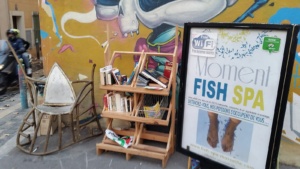
- Zarafa the Giraffe, a givebox for books on the Canebière avenue
- Je donne dans le 13 :
https://www.facebook.com/groups/1008613189203392/?multi_permalinks=1340661669331874¬if_t=group_highlights¬if_id=1480654767279808
Sources
http://movilab.org/index.php?title=Give_Box
https://de.wikipedia.org/wiki/Umsonstladen
https://fr.wikipedia.org/wiki/Diggers_(San_Francisco)
http://www.esprit68.org/diggerssf.html
Site boutique Oya Hambourg : http://www.oya-online.de/article/read/136-weniger_kaufen_mehr_leben.html#
Groupe de travail magasin gratuits Hambourg http://www.ak-loek.de/Umsonstladen/HomePage
Adopte un objet : https://www.facebook.com/groups/adopteunobjet.marseille/?fref=ts
2.3 Specification of SIC Givebox schools contest
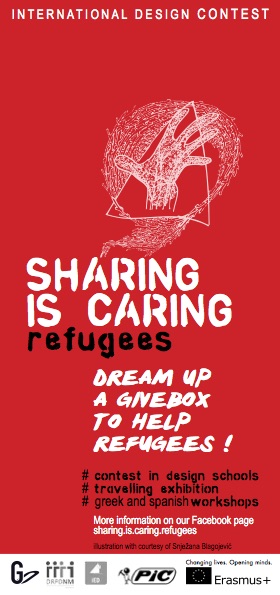
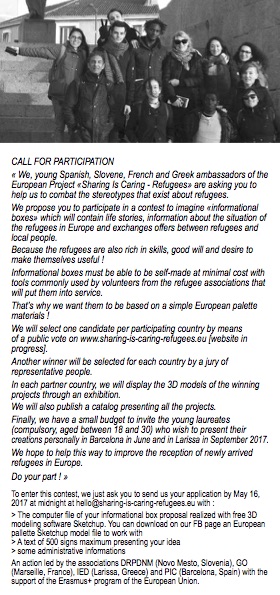
-
FEEDBACK OF FIRST WORKSHOP TESTING THE CONCEPTION AND BUILDING OF A SIC BOX
Synthesis
The contest revealed several interesting creative tracks :
- objects inviting to seat and take time to read information : chair…
- objects reminding the difficult position of migrants, asylum seekers and refugees : boat…
- objects expressing their needs : house…
- object focussing on look, storage and building functionalities
Depending on young participants and partners advises, but also on laureates availability and technical limitations, it was decided to focus upon two tracks :
- invitation to seat and read information (bench inspired of solana’s chair proposal)
- good looking object optimizing materials and storage possibilities (stackable boxes of Claire)
-
FEEDBACK OF SECOND WORKSHOP : BUILDING TWO LAUREATES SIC BOX
awaiting Marc-Antoine pictures (and small text ?)
- LAST IMPROVEMENT : THIRD MODEL OF SIC MINI BOX
The workshop in Barcelona showed the beautiful dynamics that could arise from a collective creative manual work.
It became apparent that the boxes created during the competition were monumental, difficult to transport and more suitable for sustainable installations in the public space
For this reason, it was considered useful to devote some time to designing a mini-box intended to transmit information from the SIC project for nomadic use or in confined spaces.
This box includes a base consisting of a base and a removable panel that allows it to be carried in a suitcase or a carry-on bag.
It is intended to present documents in A5 format.
The cutout of the panel can be customized according to the imagination of its creator, the only constraint requested is the use of the red color code and the logo SIC, as well as the mention of the website of the project. (in the pictures below, the same cut than first SIC box prototype has been used).
-
EXEMPLE OF NOTICE FOR BUILDING BOXES (FRENCH LAUREATE)
Complete notices freely downloadable on www.sharing-is-caring-refugees.eu

